Temecula Valley Charter ranks in the top 30% of all schools in California for overall test scores (math proficiency is top 50%, and reading proficiency is top 50%).
The percentage of students achieving proficiency in math is 40% (which is higher than the California state average of 33%). The percentage of students achieving proficiency in reading/language arts is 65% (which is higher than the California state average of 47%).
Minority enrollment is 61% of the student body (majority Hispanic), which is lower than the California state average of 80% (majority Hispanic).
Quick Stats (2025)
- School Type: Charter School
- Grades: Prekindergarten-8
- Minority Enrollment: 61%
- Overall Testing Rank: Top 30% in CA
- Math Proficiency: 40% (Top 50%)
- Reading Proficiency: 65% (Top 20%)
- Science Proficiency: 35-39% (Top 30%)
- Source: National Center for Education Statistics (NCES), CA Dept. of Education
Top Rankings
Temecula Valley Charter ranks among the top 20% of public schools in California for:
Category
Attribute
Reading/Language Arts Proficiency
Diversity
School Overview
The teacher population of 27 teachers has grown by 22% over five school years.
School Type
Grades Offered
Grades Prekindergarten-8
Total Students (22-23)
530 students
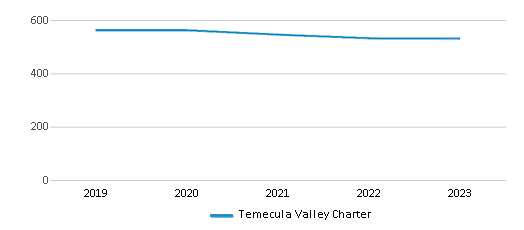
Gender %
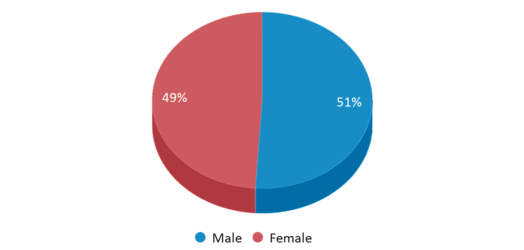
Total Classroom Teachers
27 teachers
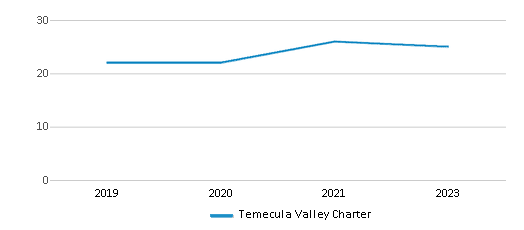
School Calendar
School Rankings
Temecula Valley Charter ranks within the top 30% of all 9,602 schools in California (based off of combined math and reading proficiency testing data).
The diversity score of Temecula Valley Charter is 0.70, which is more than the diversity score at state average of 0.63. The school's diversity has stayed relatively flat over five school years.
Overall Testing Rank
#2279 out of 9602 schools
(Top 30%)
(Top 30%)
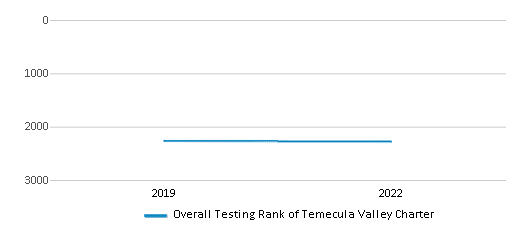
Math Test Scores (% Proficient)
40%
33%
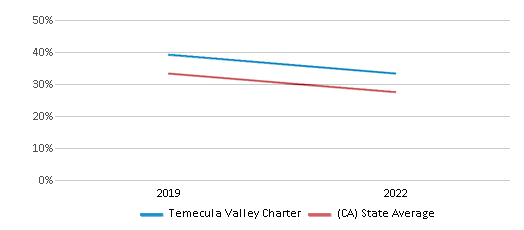
Reading/Language Arts Test Scores (% Proficient)
65%
47%
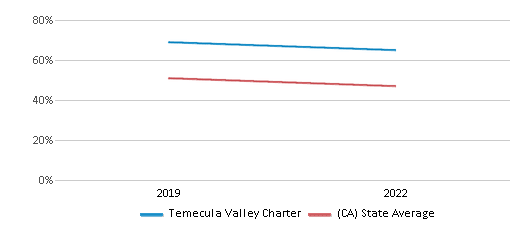
Science Test Scores (% Proficient)
35-39%
29%
Student : Teacher Ratio
n/a
21:1
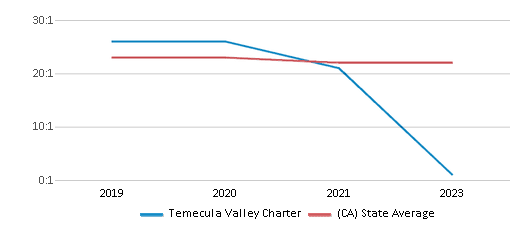
American Indian
n/a
1%
Asian
9%
12%
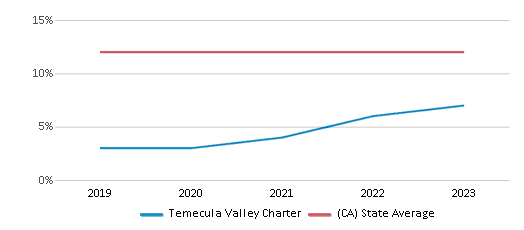
Hispanic
37%
56%
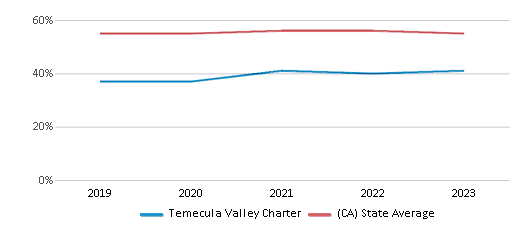
Black
5%
5%
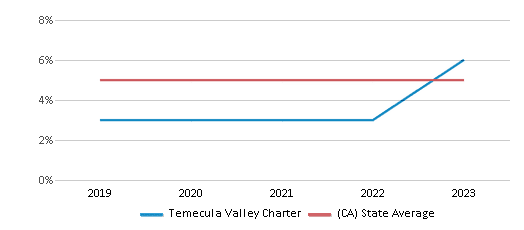
White
39%
20%
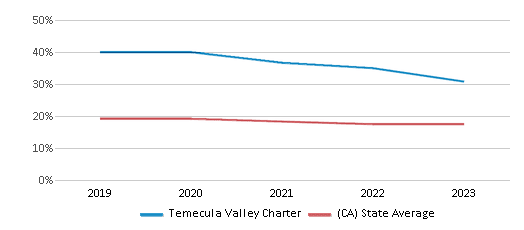
Hawaiian
n/a
n/a
Two or more races
10%
6%
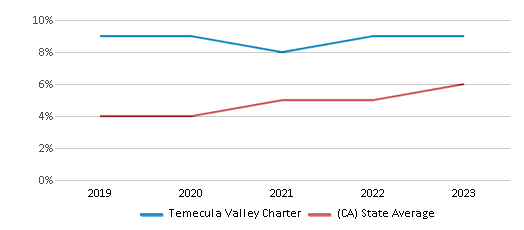
All Ethnic Groups
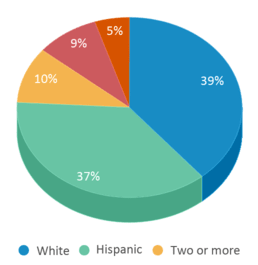
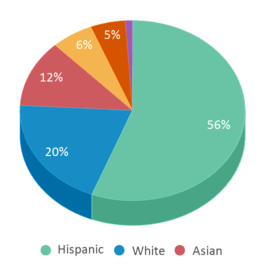
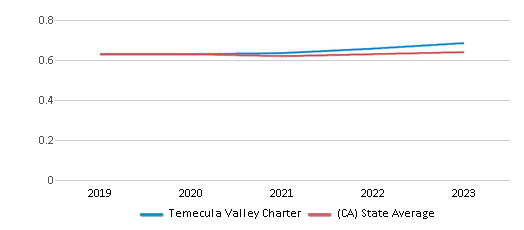
Eligible for Free Lunch
16%
51%
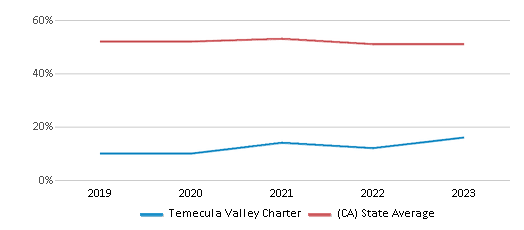
Eligible for Reduced Lunch (20-21)
4%
6%
School Statewide Testing
School District Name
Sports
Total Sports Offered
8 sports
Sports
Baseball, Basketball, Cheering, Cross Country Running, Football, Golf, Soccer, Volley Ball
Source: National Center for Education Statistics (NCES), CA Dept. of Education
School Notes
- Temecula Valley Charter School is an alliance of parents, educators, and community members dedicated to providing a kindergarten through eighth grade family-centered atmosphere which endeavors to create a dynamic learning environment that meets or exceeds California State Standards and where all students can discover, experience, and celebrate their own worth. Temecula Valley Charter School will promote the growth of each child's character, knowledge, and understanding of themselves and their relationship to the world.
Profile last updated:
Frequently Asked Questions
What is Temecula Valley Charter's ranking?
Temecula Valley Charter is ranked #2279 out of 9,602 schools, which ranks it among the top 30% of public schools in California.
What schools are Temecula Valley Charter often compared to?
Temecula Valley Charteris often viewed alongside schools like Harvest Hill S.t.e.a.m. Academy, Temecula Preparatory by visitors of our site.
What percent of students have achieved state testing proficiency in math and reading?
40% of students have achieved math proficiency (compared to the 33% CA state average), while 65% of students have achieved reading proficiency (compared to the 47% CA state average).
How many students attend Temecula Valley Charter?
530 students attend Temecula Valley Charter.
What is the racial composition of the student body?
39% of Temecula Valley Charter students are White, 37% of students are Hispanic, 10% of students are Two or more races, 9% of students are Asian, and 5% of students are Black.
What grades does Temecula Valley Charter offer ?
Temecula Valley Charter offers enrollment in grades Prekindergarten-8
What school district is Temecula Valley Charter part of?
Temecula Valley Charter is part of Temecula Valley Charter School District.
School Reviews
Review Temecula Valley Charter. Reviews should be a few sentences in length. Please include any comments on:
- Quality of academic programs, teachers, and facilities
- Availability of music, art, sports and other extracurricular activities
Recent Articles

What Is A Charter School?
Explore the world of charter schools in this comprehensive guide. Learn about their history, how they operate, and the pros and cons of this educational innovation. Discover key facts about charter schools, including admission policies, demographics, and funding, as well as what to look for when considering a charter school for your child.

10 Reasons Why High School Sports Benefit Students
Discover the 10 compelling reasons why high school sports are beneficial for students. This comprehensive article explores how athletics enhance academic performance, foster personal growth, and develop crucial life skills. From improved fitness and time management to leadership development and community representation, learn why participating in high school sports can be a game-changer for students' overall success and well-being.

February 05, 2025
Understanding the U.S. Department of Education: Structure, Impact, and EvolutionWe explore how the Department of Education shapes American education, from its cabinet-level leadership to its impact on millions of students, written for general audiences seeking clarity on this vital institution.









